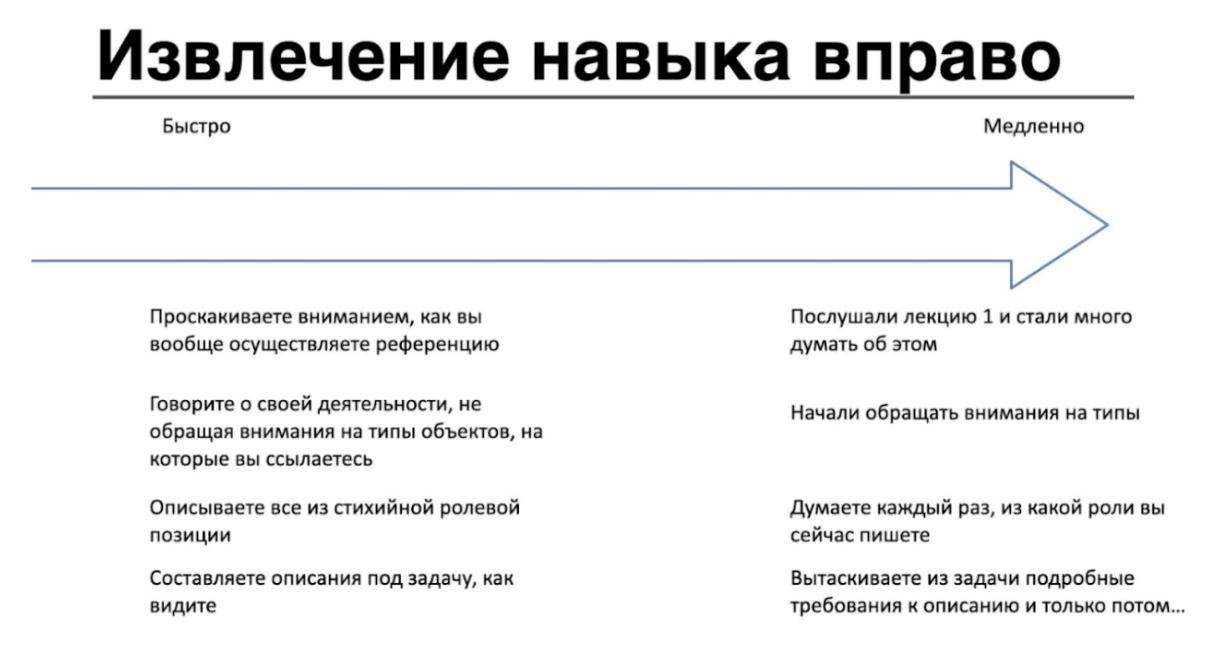The spectrum between speed and accuracy
And at this point, it is time to get acquainted with the idea of the spectrum between speed and accuracy. This model is a loose adaptation and some addition to the idea of the operation of the first and second systems from the book "Thinking, Fast and Slow" by Daniel Kahneman, but with a significant introduction of more scales.
Basically, the Kahneman model is as follows.
We have tasks that do not require concentration on them for execution. Moreover, all their execution may stop if we start to think about what we are doing. These actions are performed better when we intuitively make decisions and do something there. For example, we recognize faces or read words in our native language. This happens automatically - we literally cannot help but read words in a familiar language written in our field of vision.
On the other hand, there are tasks that are solved very poorly in this way. For them, slow, focused attention is needed, which sequentially focuses on each action and still holds the whole picture. This includes, for example, mentally multiplying multi-digit numbers or creating logical chains with conclusions.
There are also tasks that are theoretically solved in one way, but for some reason we solve them differently. This is the gray zone where errors and distortions of thinking occur: if you search for "cognitive biases", you will find many such examples.
We supplement this model by saying that it is more of a spectrum of thinking speed rather than just a binary division into fast and slow, or more precisely, several spectra.
On the left side of the spectrum, we have grasping and intuition. Intuition refers to well-honed processes brought to automatism (intuition does not come out of nowhere, quick "intuitive" thinking is the result of accumulated experience).
On the right side of the spectrum, we have careful reasoning and conscious decision-making. There, chains are formed: if X, then Y; if Y, then Z. If X leads to Z, then you need to take such action.
This spectrum reflects well which skills are familiar and automatized for you, and which are not.

Acquiring fluency looks like this:

For example, you are used to answering questions in your subject area using intuition.
But if you are moved to another subject area, your intuition will not work the same way. So if you are comfortable describing things based solely on goals, then most likely it works only within a well-known area where your intuition is well-trained with a large number of examples.
Many skills that you currently have and use, we try to move to the right, do something with them, discuss them in some way, and then train them again to automatism in a new form.
